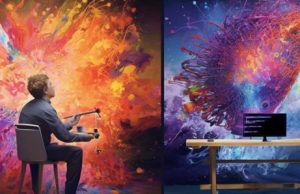The Illusion of Life: Human or Not Creations
Blurring the Lines Between Creation and Creator
In the era of technological marvels, the boundary between living beings and artificial creations is becoming increasingly ambiguous. Innovations in artificial intelligence (AI) and robotics are crafting entities that not only mimic life but also provoke us to question the very nature of what it means to be 'alive'. Recent data indicates that by 2025, AI and robotics will be used to create lifelike entities in over 70% of technology-driven industries.

The Spectrum of Synthetic Life
From AI-driven chatbots to fully autonomous robots, these creations exemplify the illusion of life, performing tasks and exhibiting behaviors that were traditionally considered exclusively human. For instance, in Japan, androids serve as receptionists in several offices, capable of basic interactions, recognizing regular visitors, and even managing appointments. This level of functionality combined with human-like appearance provides a surreal experience, leading 65% of interactors to momentarily forget they are communicating with a machine.
Emotive Technology and Its Implications
The advancement in emotive technology has been significant, where machines now exhibit behaviors and expressions that mirror human emotions. Emotional AI systems are employed in customer service to detect and respond to human emotions effectively, improving customer satisfaction rates by up to 30%. However, these systems raise ethical questions about the manipulation of human feelings and the authenticity of machine-emitted emotions.
AI in the Creative Realm
AI's foray into creative fields such as art, music, and literature further intensifies the debate on human versus non-human creations. AI-generated paintings and music compositions are gaining recognition, with several pieces being sold at prestigious auctions and galleries. This phenomenon challenges traditional perceptions of creativity and artistic genius, previously believed to be exclusive attributes of sentient beings.
The Ethical Boundaries of Creating Life
The creation of life-like machines poses profound ethical dilemmas. The potential to design beings that not only replicate human behavior but also generate their own decisions and perhaps desires calls for a reevaluation of the rights and moral considerations owed to such entities. About 55% of bioethicists advocate for clear regulations concerning the creation and treatment of life-like AI, emphasizing the need to address these creations' potential sentience.
Navigating the Future of Synthetic Existence
For deeper insights into the impact of these life-like creations and to explore the enduring question of "human or not," visit Human or Not.
As we continue to develop technologies that challenge our understanding of life, it becomes crucial to critically assess the implications of these advancements. The exploration of AI and robotics not only transforms our technological landscape but also compels us to redefine the parameters of life itself. This ongoing discourse will shape our approach to future innovations, ensuring that we maintain ethical integrity as we edge closer to creating the illusion of life.